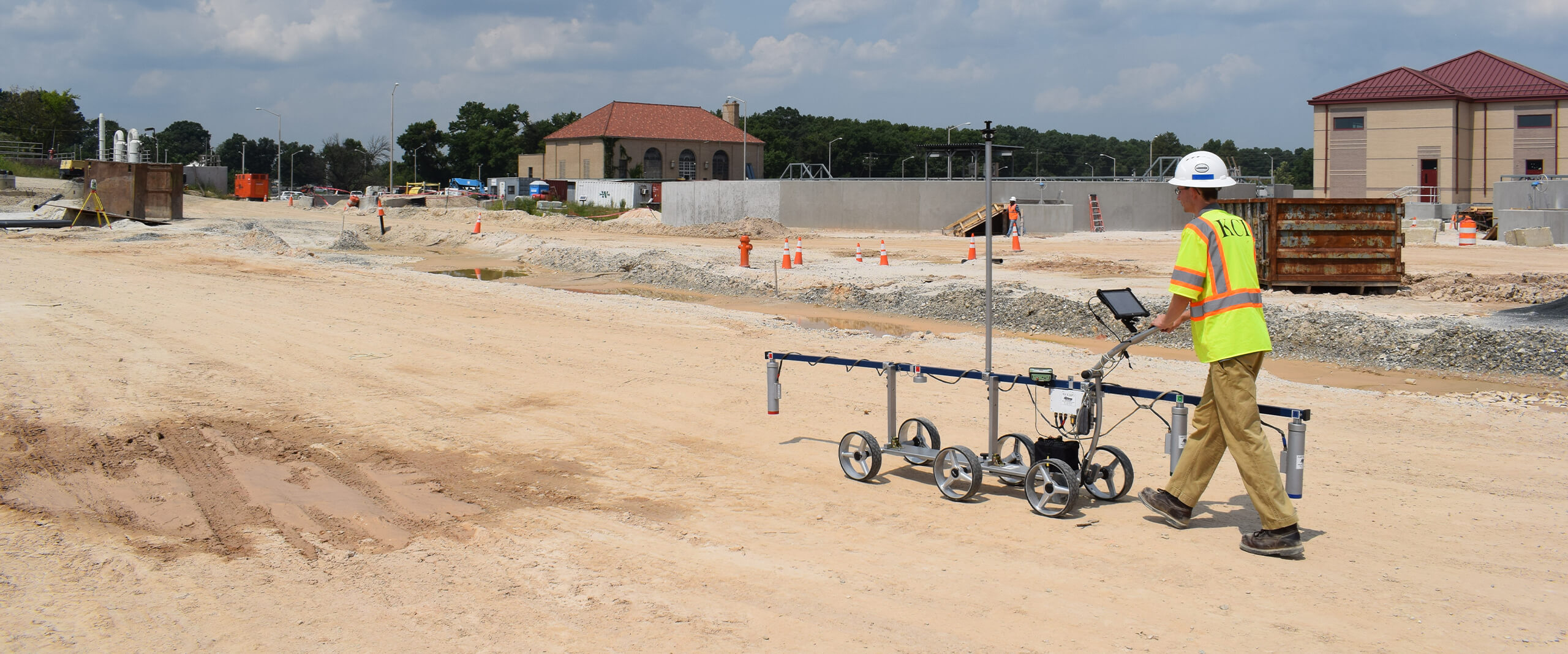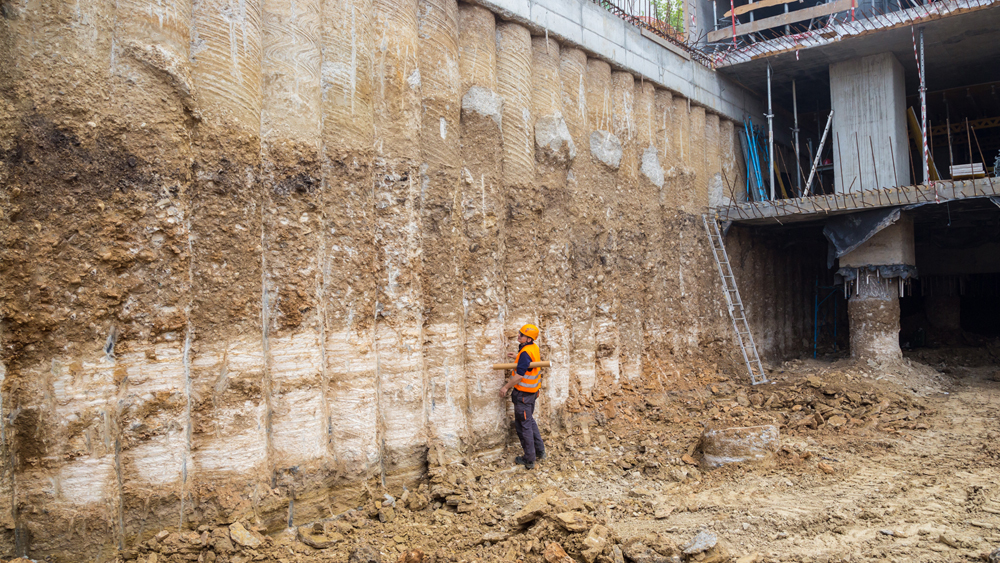Comprehending the Comprehensive Function of Geotechnical Designers in Ground Examination and Dirt Evaluation for Construction Projects
Geotechnical designers are integral to the success of building tasks, offering necessary understandings through comprehensive ground investigations and soil analysis. Their competence in analyzing soil behavior and utilizing advanced testing strategies notifies important choices that maintain structural honesty and security.
Function of Geotechnical Engineers
The critical duty of geotechnical engineers in building tasks can not be overemphasized, as they offer necessary insights right into soil habits and website problems. These experts are entrusted with examining the viability of the ground for various kinds of structures, making certain safety and security throughout the building procedure. Their knowledge encompasses a wide variety of tasks, consisting of website characterization, dirt sampling, and laboratory testing, which are critical for establishing the physical and mechanical residential properties of the dirt.
Geotechnical designers use their findings to create foundational layouts that accommodate load-bearing requirements and reduce dangers connected to dirt negotiation, liquefaction, and slope security. They play a critical role in recognizing prospective dangers, such as groundwater variations and contamination, which can substantially influence job stability. They work together with architects, civil designers, and contractors to guarantee that geotechnical factors to consider are incorporated into the total layout and construction stages.
Ground Examination Strategies
Ground examination methods form the backbone of geotechnical engineering, allowing engineers to gain an extensive understanding of subsurface conditions. These methods are crucial for evaluating soil homes, identifying groundwater degrees, and recognizing potential geological hazards.
Typical approaches include borehole boring, which enables the extraction of dirt examples at numerous depths, supplying essential information for evaluation. In addition, in situ screening techniques, such as Standard Penetration Tests (SPT) and Cone Infiltration Tests (CPT), are employed to evaluate dirt toughness and density straight in the ground.
Geophysical approaches additionally play a substantial function in ground investigations. Techniques such as seismic surveys and electric resistivity tomography help evaluate subsurface attributes without considerable excavation. geotechnical eng. These non-invasive methods are particularly helpful in large or delicate areas where disruption must be minimized
Additionally, exploratory trenches can be dug deep into to visually check soil layers and recognize any type of abnormalities. Each of these strategies contributes special insights, permitting geotechnical designers to create exact website assessments and notify design decisions. In summary, a combination of these ground examination methods is crucial for successful building tasks, making sure safety and security and structural stability.
Soil Evaluation Methods
Soil evaluation techniques are crucial for recognizing the physical and chemical buildings of dirt, which straight influence the style and construction of foundations and various other frameworks. Different techniques are employed to analyze soil characteristics, making certain that geotechnical designers get precise data for informed decision-making.
One typically utilized approach is grain dimension evaluation, which establishes the distribution of particle dimensions within a soil sample. This is crucial for identifying dirt kinds and predicting their habits under lots. One more necessary technique is Atterberg restrictions screening, which evaluates the plasticity and dampness content of fine-grained dirts, giving understandings right into their engineering residential properties.

Area examinations, such as Basic Penetration Examinations (SPT) and Cone Infiltration Tests (CPT), offer important in-situ information concerning dirt strength and stratification. Collectively, these dirt analysis approaches create the foundation of geotechnical examination, allowing designers to design efficient and safe structures customized to the particular conditions of the site.
Danger Reduction Techniques
Carrying out reliable danger reduction methods is essential for geotechnical engineers to deal with possible difficulties in building and construction tasks. These techniques are essential in determining, assessing, and managing dangers connected with dirt conditions, website stability, and groundwater changes, which can adversely influence job end results.
One primary strategy entails carrying out comprehensive site investigations that utilize sophisticated geophysical methods and detailed dirt tasting. By getting precise data on subsurface problems, designers can make educated decisions on design and building and construction methods. Furthermore, utilizing anticipating modeling tools permits for the simulation of various circumstances, making it possible for designers to visualize possible problems and implement preventative measures.
Moreover, developing clear communication channels amongst task stakeholders fosters a collective technique to take the chance of management. Normal updates and assessments make certain that all events are aware of the developing website conditions and can adapt their methods as necessary.

Influence On Building And Construction Tasks
The performance of danger mitigation strategies straight affects the general success of building and construction projects. Geotechnical engineers play a pivotal role in this domain name, as their experience in ground investigation and dirt evaluation educates crucial decisions throughout the building process. By properly evaluating dirt conditions and identifying potential risks, these experts make it possible for project groups to design effective services that lower threats connected with ground instability, water infiltration, and various other geotechnical difficulties.
The impact of detailed geotechnical analysis appears in numerous aspects of building and construction jobs, including cost management, job timelines, and architectural honesty. Early identification of concerns enables prompt interventions, reducing costly hold-ups and budget plan overruns. A comprehensive understanding of website problems enhances the style and engineering procedure, geo tech engineering making certain that frameworks are developed to hold up against ecological stress and potential natural calamities.
Eventually, the contributions of geotechnical designers are essential to the successful execution of construction projects. Their job not only fosters safety and security and compliance with regulations yet also boosts the lasting sustainability of frameworks, making sure that they do properly throughout their desired lifespan. The collaboration between various other stakeholders and geotechnical groups is vital for accomplishing optimal results in building and construction endeavors.
Final Thought
Finally, geotechnical designers execute a vital feature in building and construction jobs through thorough ground examinations and dirt analyses. Their knowledge in analyzing soil habits, employing different investigation methods, and carrying out risk reduction methods substantially adds to the structural honesty and safety and security of developed atmospheres. By collaborating with multidisciplinary groups, these professionals enhance task efficiency and ensure compliance with safety and security criteria, eventually causing successful building results and minimized prospective dangers.
Geotechnical engineers are integral to the success of construction projects, providing necessary understandings via extensive ground investigations and soil analysis.The crucial function of geotechnical designers in building and construction jobs can not be overemphasized, as they give crucial understandings right into soil actions and site conditions. Their competence incorporates a large variety of activities, consisting of site characterization, dirt tasting, and research laboratory screening, which are essential for establishing the mechanical and physical residential properties of the dirt.
By properly examining soil problems and determining prospective dangers, these specialists enable job teams to devise reliable options that minimize dangers associated with ground instability, water seepage, and various other geotechnical difficulties.
In conclusion, geotechnical designers perform an essential function in building jobs via comprehensive ground investigations and soil evaluations.